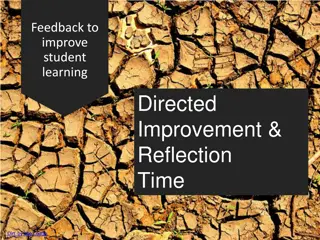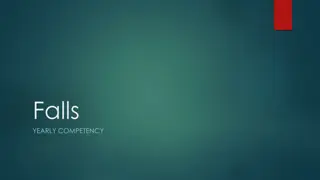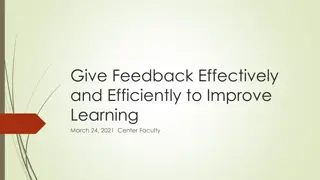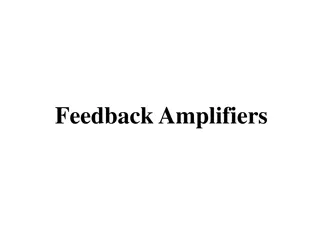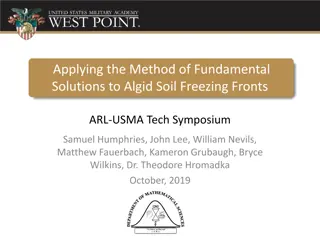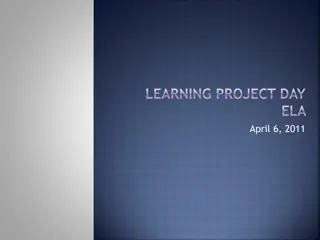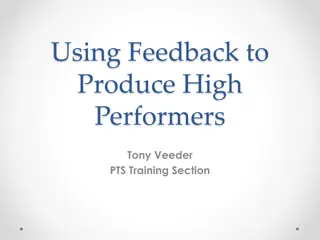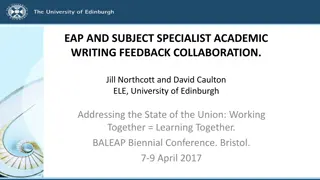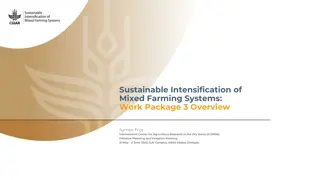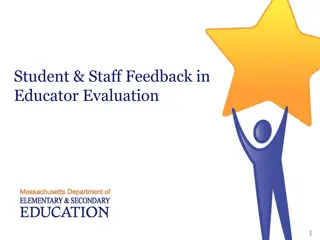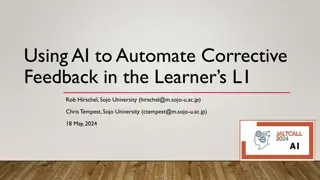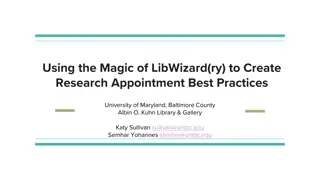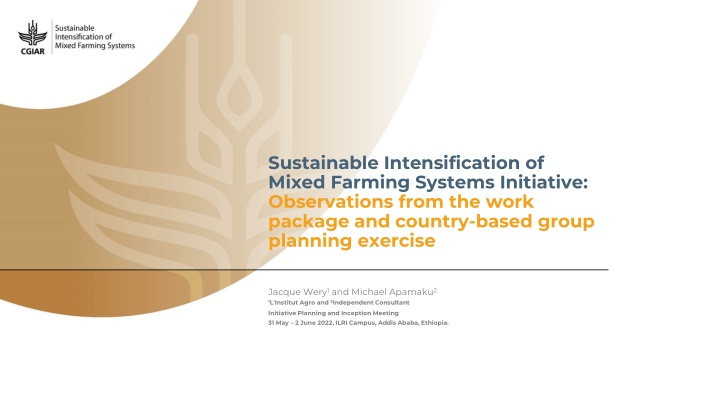
Observations on Sustainable Intensification of Mixed Farming Systems
Explore observations and insights from the Sustainable Intensification of Mixed Farming Systems initiative regarding the scope, challenges, and strategies for success. Discover how this initiative aims to enhance agricultural systems at both local and global levels through innovative approaches and partnerships.
Download Presentation

Please find below an Image/Link to download the presentation.
The content on the website is provided AS IS for your information and personal use only. It may not be sold, licensed, or shared on other websites without obtaining consent from the author. If you encounter any issues during the download, it is possible that the publisher has removed the file from their server.
You are allowed to download the files provided on this website for personal or commercial use, subject to the condition that they are used lawfully. All files are the property of their respective owners.
The content on the website is provided AS IS for your information and personal use only. It may not be sold, licensed, or shared on other websites without obtaining consent from the author.
E N D
Presentation Transcript
Sustainable Intensification of Mixed Farming Systems Initiative: Observations from the work package and country-based group planning exercise Jacque Wery1and Michael Apamaku2 1L'Institut Agro and 2Independent Consultant Initiative Planning and Inception Meeting 31 May 2 June 2022, ILRI Campus, Addis Ababa, Ethiopia.
Day 2 confirmed the idea that : The SI-MFS is well designed and gather a group of scientists from several centers and disciplines willing to work together The selected countries and systems provide a sound basis to build a systemic approach on mature innovations and partnerships established through previous projects The initiative can make significant contribution to : SI of MFS Systemic approaches for the analysis and design of Agricultural Systems at farm and landscape level At local level (case studies) and global (country, global south). www.cgiar.org
Observations about the contribution of the initiative to SI of MFS www.cgiar.org
Observations (1) Scope for defining clearly criteria to determine successfulness of the SI of MFS o Could we define minimum requirement of a Representative MF ? What are the challenges and constraints to SI MFS? Could these be surveyed? o Access to technologies for enhanced production o Market information and access o Land tenure systems, etc. Is there scope to develop a strategy to guide implementation of SI MFS? www.cgiar.org
Observations (2) SI of MFS Initiative is a short 3-year initiative o A new approach vs. creation of new research? o SI of MFS is an opportunity to bring our research outputs into action o Could we survey the scope of innovations as they apply to SI MFS? SI of MFS exists in a context the link constantly the hard-science: o With the market, and o With economic indicators Linking the results framework with the market economic indicators enables the scientist to link the drivers, development of the tools, determination of the pathways, engagement of policy makers, etc. www.cgiar.org
Observations (3) Mixed Farming Systems o The implied definition of MFS is Crop Livestock integration - Could we define specific entry for aquaculture, silviculture, agroforestry? There is scope for an expanded role for livestock within SI of MFS Livestock are multifunctional in their role in society o Crop-livestock enterprises are associated with higher Rates of Return o Steinfeld (1994) projects high and sustained CAGR for livestock With higher level of integration of livestock, there are opportunities to link SI with the public health research agenda o Creates channels to link SI of MFS activities with ILRI-OHRECA under the One CGIAR initiative www.cgiar.org
Observations (4) A constraint to implement SI of MFS is land tenure systems o Inequitable distribution and ownership of land Opportunity under WP4 / 5 to advocate: o Land tenure reform vs. redistribution o Where arable land is abundant, can governments facilitate greater smallholder access through policies for rent or lease Irrigation An option to make accessible more land for expanded agricultural production Opportunity to link with IWMI and ICARDA www.cgiar.org
Observations (5) The benefits of MFS are well known and widely appreciated: o Enhance the benefits of the constituent crop and livestock farming systems o Provide benefits of risk management benefits How may we tap into indigenous knowledge as a basis to reinforce learning, influence policy, and maximize impact of SI of MFS? The predominant strategy vs. climate change is adaptation; can we expand the SI - MFS portfolio of climate smart strategies to encompass activities in climate mitigation? o Benefit of mitigation frameworks and tools exist to quantify GHG abatement www.cgiar.org
Observations about systems approaches in the initiative www.cgiar.org
The initiative has a strong responsibility in the One CGIAR An attempt to bring back systems thinking and systems design into the One CGIAR Agenda Applied to the most complex systems in agriculture (MFS in family farming) Key Donors are supportive Need to show that systems research is operationnal to deliver in a three years time the local component of SI-MFS (country-based case studies) The only initiative with a WP dedicated to systems M&T and a WP dedicated to CapDev in agricultural systems transformative pathways the global component of SI-MFS (MFS Framework, SystemsToolbox, participatory for the co ; Virtual Institute) Risks of Systems CRP syndroma is high but opportunities for success are there if some aspects are considered from the begining www.cgiar.org
a. The initiative is not about component innovation but about systemic innovation (socio-technical bundles in a farm context with market/landscape/social linkages) A large portfolio of mature component innovations for each case study need to focuss on these as a first step Based on previous projects providing data and partnerships Not to be scaled as such but as bundles of innovations (several component innovation) targeted to specific farm types (likelly to improve adoption, scaling and overall impact) Good to have entry points in a systemic innovation process o to engage stakeholders such as farmers and private sector o to re-assure donors and policy makers o Provided they are considered from the begining in a farm/landscape/market context Consider key interactions in the system to guide co-design of the bundles in order to maximize likelihood of adoption and minimize trade-offs (eg. Biomass or labour or water allocation ; off-farm resources and activities .) www.cgiar.org
b. Workflow across WP and for each case study need to be better defined The project is in itself a complex system : components (WPs) are clear but too many interactions to manage (simplify, prioritize, plan) Project, WP and Case study management need a system s framework adapted to SI-MFS-DEED-SIAF defined, shared and fine-tuned to each Case Study With integration of all sustainability dimensions, entry points (component innovations), social/gender components and M&T Cannot wait for it to start stakeholders engagement in case studies but systems framework needed for data collection, M&T selection and use/users Need enough skills and resources dedicated to operationalisation of systems approaches in the project. www.cgiar.org
c. Requires a common understanding and operationalisation of key concepts among project participants Some examples: Mixed Farming System in a farm/landscape/market context Socio-technical bundles of innovations System thinking System analysis System design System assessment Trade-off analysis Farm typology And the co www.cgiar.org

